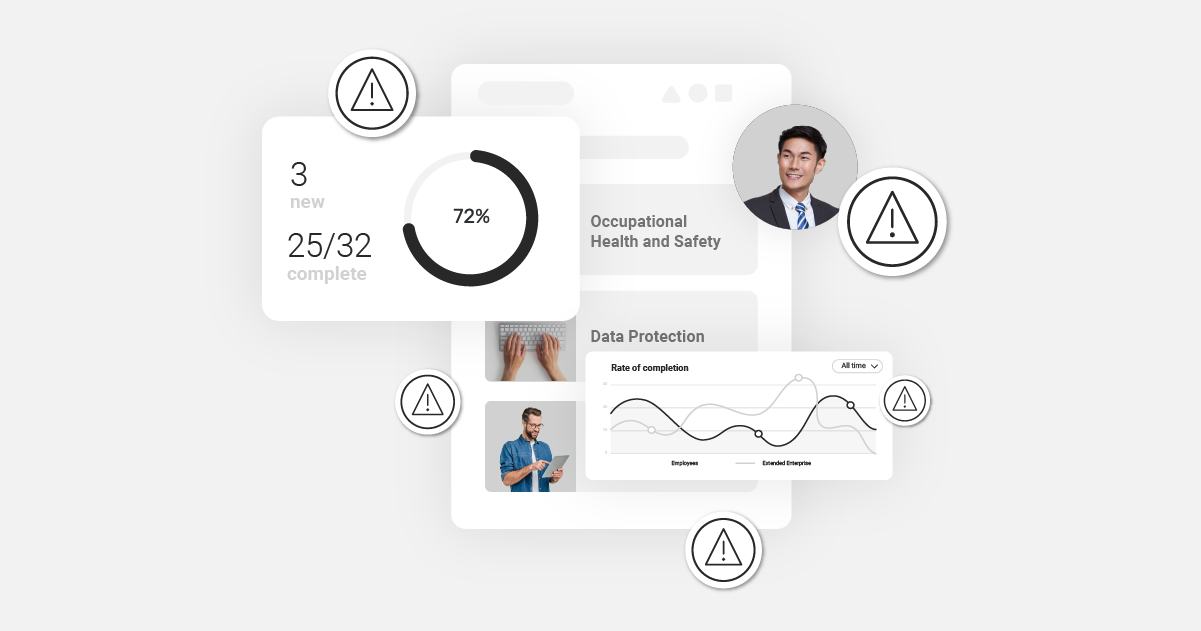Common pitfalls to avoid when replacing your LMS

Top 8 pitfalls when switching to a new LMS
Switching to a new learning management system (LMS) can offer significant benefits, but it’s also a complex process with several potential challenges. A well-planned transition is key to ensuring minimal disruption and getting the most value from your new system. However, many organisations fall into common traps that lead to delays, increased costs, and user dissatisfaction. Here are some pitfalls to avoid when replacing your LMS. For comprehensive guide to switching to a new LMS, download our free LMS Upgrade Guide:
1. Underestimating the importance of planning
One of the biggest mistakes organisations make is rushing into the replacement process without a comprehensive plan. It’s essential to thoroughly analyse your current system and clearly define the features and capabilities your new LMS must have to meet your long-term business goals. Skipping this step can result in choosing an LMS that doesn’t fit your needs, or one that requires expensive customisation later on. Engaging key stakeholders early on, developing a detailed migration plan, and identifying all the necessary features for both current and future needs are crucial steps in avoiding this pitfall.

2. Neglecting user data and learning history
Migrating user data and learning histories can often be more complicated than expected. Many organisations overlook the importance of deciding which data should be transferred and how much historical information is necessary. Failure to plan for this can lead to data loss or a lack of continuity for learners. To avoid this, it’s essential to safeguard critical user data and ensure the new LMS can accommodate it efficiently. If not all data needs to be transferred, consider archiving older information.
Real success stories
3. Inadequate testing
Minimising or skipping the testing phase can cause significant issues once the system is live. Organisations may assume that once data is migrated, the new system will work seamlessly. However, without thorough testing, important workflows could be missed, leading to disruptions. To prevent this, it’s vital to allocate enough time for test migrations and user acceptance testing. Ensure a group of users tests the system comprehensively, and gather feedback to refine the process before the full rollout.
4. Poor change management
Employees often resist change, particularly when it involves new systems and processes. Without a solid change management strategy, adoption rates may be low, and users may become frustrated. Insufficient training and support can lead to struggles with the new LMS. To address this, it’s important to communicate changes early, provide comprehensive training, and offer ongoing support to ease the transition. Involving employees in the process can also help ensure a smoother acceptance of the new system.
5. Overlooking integration requirements
In modern learning environments, seamless integration with other systems, such as HR or CRM tools, is essential. Overlooking integration needs can limit the effectiveness of the new LMS and create additional workarounds or require future updates. Before selecting a new LMS, ensure it can integrate with your existing systems and support future integrations, which will streamline operations and allow your LMS to function as part of a broader learning ecosystem.
6. Focusing solely on current needs
Many organisations choose a new LMS based on their immediate requirements, without considering future growth or evolving needs. This short-sighted approach can result in an LMS that quickly becomes outdated or inadequate as the organisation grows. It’s important to select an LMS with scalability in mind, ensuring it can accommodate future learning needs, such as an increase in user numbers, new learning formats, and emerging technologies.
7. Failing to manage expectations
Replacing an LMS is a large-scale project, and it’s easy to underestimate the time and resources required. Many organisations set unrealistic timelines and expectations, leading to rushed decisions and incomplete implementations. It’s important to be realistic about the project’s scope and timeline. Building in time for thorough planning, testing, and phased rollouts will help ensure a smooth transition.
8. Inadequate vendor support
Not all LMS vendors provide the same level of support. Choosing a vendor without sufficient training, ongoing support, or implementation assistance can leave your team struggling to resolve issues or use the system effectively. To avoid this, it’s essential to partner with a vendor that offers strong customer support, including training, troubleshooting, and post-launch services. Their expertise will be invaluable in overcoming challenges and ensuring successful implementation.
Take the next step towards your new LMS
Replacing your LMS is a major project, but with careful planning and awareness of these common pitfalls, you can avoid costly mistakes and achieve a smoother, more successful transition. By focusing on detailed planning, robust testing, effective change management, and selecting a scalable, well-supported system, you’ll set your organisation up for long-term success. To take the next step, download our free LMS Upgrade Guide:

